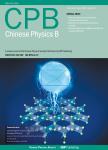Resisting shrinkage properties of volume holograms recorded in TiO_2 nanoparticle-dispersed acrylamide-based photopolymer
Resisting shrinkage properties of volume holograms recorded in TiO_2 nanoparticle-dispersed acrylamide-based photopolymer作者机构:Key Discipline Open Laboratory of Photonic and Electronic Information Materials and Devices Henan University College of Peili Engineering Technology Lanzhou City University
出 版 物:《Chinese Physics B》 (中国物理B(英文版))
年 卷 期:2013年第22卷第12期
页 面:280-286页
核心收录:
学科分类:07[理学] 070205[理学-凝聚态物理] 0805[工学-材料科学与工程(可授工学、理学学位)] 0704[理学-天文学] 0702[理学-物理学]
基 金:Project supported by the National Natural Science Foundation of China(Grant No.61177004)
主 题:holographic proprieties TiO2 nanoparticle diffraction efficiency Bragg mismatch
摘 要:A novel organic–inorganic nanoparticle–photopolymer composite system is developed, and its fundamental holographic recording characteristics are studied. In this hydrophilic TiO2-nanoparticle-dispersed acrylamide photopolymer composite system, the counter-diffusion of monomers and nanoparticles plays a fundamental and key role in hologram grating formation. The experimental results indicate that the volume shrinkage of the nanoparticle–photopolymer film during the holographic recording can be drastically reduced compared with the undoped photopolymer film. It is also found that the diffraction efficiency of the grating recorded in the nanoparticle–photopolymer film depends strongly on the concentration of the TiO2-nanoparticles, and there exists an optimal TiO2-nanoparticle-doping concentration to make the diffraction efficiency and the refractive index modulation reach their maxima. Additionally, the digital data page is stored and reconstructed in the nanoparticle–photopolymer film.



